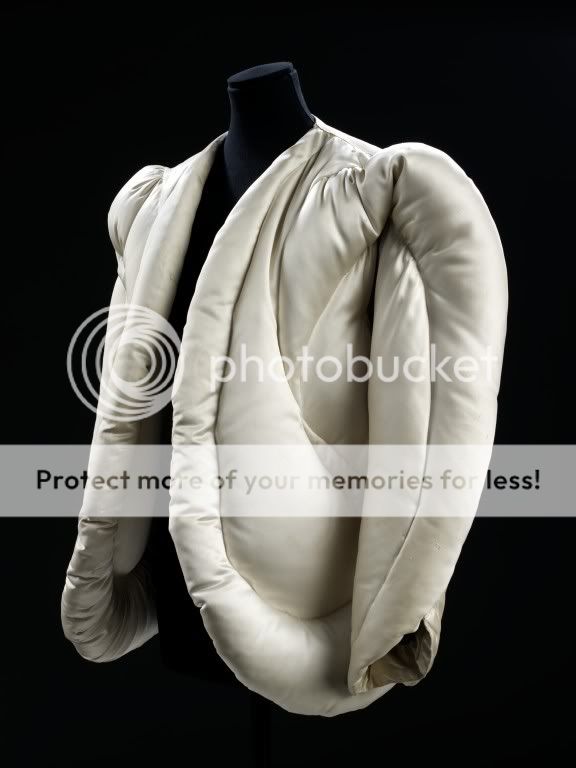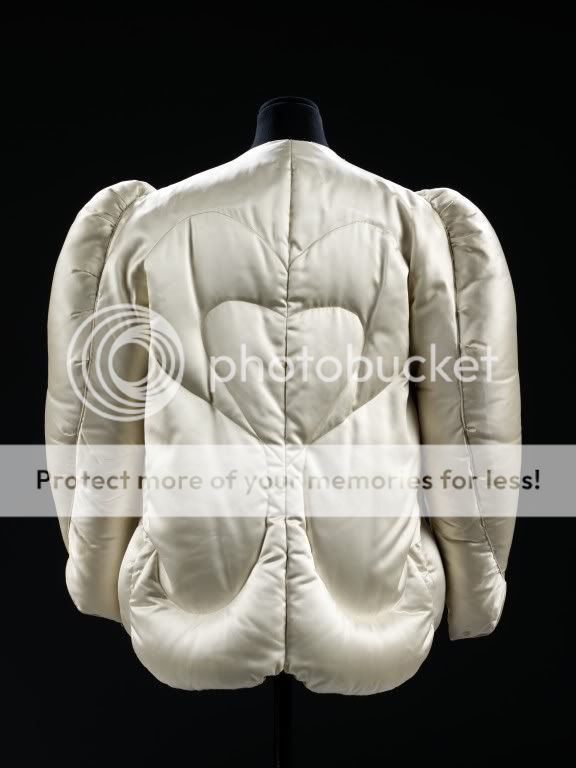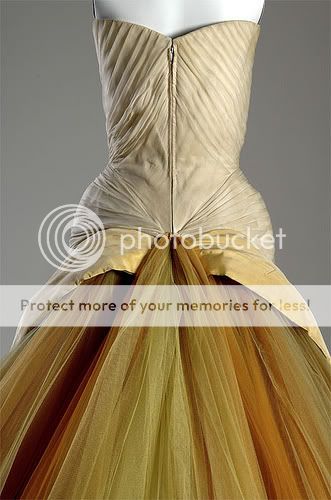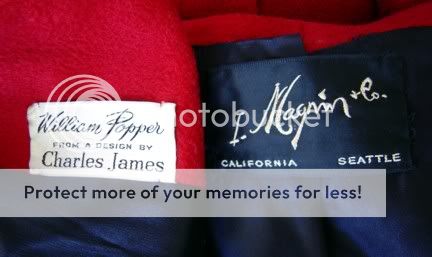Some other photos and a description of the four leaf clover design for Mrs William Randolph Hearst.












The bodice and upper part of the skirt are made of ivory silk satin interfaced with ivory cotton muslin. The upper skirt is also interfaced with horsehair canvas and stiff bobbinet tulle. Black silk velvet is joined by hand to the upper and lower pieces. The lower hem section is made of ivory silk faille interfaced with yellowed non-woven Pellon® and stiff white bobbinet tulle, covered with an ivory silk faille inner facing. The visible layers at the bodice cover a peach-colored silk satin lining boned eleven times and extending below the waist level. The dress closes with a center back zipper. At some point, the gown was severely altered and possibly taken apart and suffered flood damage at the hem. A new understructure was created in 2007 by Gayle Strege and Joycelyn Falsken to replicate the effect of the original three-layered understructure observed at the Brooklyn Museum
diagram of the seaming...

dept.kent.edu

dept.kent.edu



















